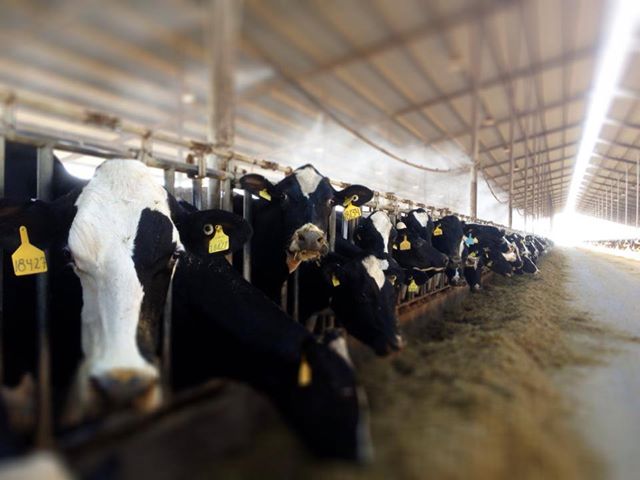
Cows produce the majority of milk in the world
“The cow is the foster mother of the human race. From the time of the ancient Hindoo to this time have the thoughts of men turned to this kindly and beneficent creature as one of the chief sustaining forces of the human race” – W.D. Hoard
Throughout history, cows have produced milk for human sustenance, (even before agriculture was developed). Today cows produce the majority of milk consumed by people. The reason why cows are the number 1 milk source in the world is because they excel at producing milk. They are masters at converting feed sources (not fit for humans), and turning it into a highly nutritious product that we call milk.
If you’ve ever wondered how much milk cows produce, you came to the right place.
The Average Cow
The United States is one of the leading dairy producing countries in the world, and American cows are among the most productive cows in world. The average cow in the U.S. produces about 21,000 lbs. of milk per year, that’s nearly 2,500 gallons a year!
On a daily basis, most cows average about 70 lbs. of milk per day, or about 8 gallons per day. 8 gallons is about 128 glasses of milk per day.
Interestingly, a herd of 800 cows can produce a large tanker truckload of milk each day. Over a year, that would be about 20 million lbs. of milk or 2.3 million gallons of milk.
**Productivity of the average cow in select countries. Amount of pounds of milk produced in one year**
Milk production records
Cows are getting better at producing milk every year. Records are being broken all the time about how much milk cows can give. It’s really quite amazing how much cows have improved over the years.
By the time you read this, there may be a new record. But in order to illustrate how much milk the top cows can give, this is an interesting story.
According to a news report, a cow in Wisconsin produced 72,000 lbs. of milk in a year, or about 8,000 gallons of milk in a year. To produce that much milk, it means that the cow had to produce about 23 gallons of milk each day. (source)
**The average cow produces 70 lbs. of milk per day, or about 8 gallons. Compare that to a top record holding cow that produces 23 gallons per day**
Variables affecting milk production
The amount of milk produced by dairy cows can be affected by a wide variety of variables. The key to dairy farming successfully is to minimize the impact of these variables. The following are some things that impact milk production:
- Feeding – What the cow eats is the largest factor affecting production. If she isn’t eating enough energy or protein her milk production will decline. Changing feed sources will also affect the cow’s milk production. Any change in her daily meal will affect milk production until the cows re-adjusts to the new feed.
- Genetic Potential – The genetics of the cow plays a role in how much milk she can produce. If the cow is the daughter of a high producing cow, she will be more likely to produce a lot of milk due to her genetic predisposition towards milk production.
- Weather – Sudden weather changes can stress the cows causing a decrease in milk production. Hot weather will also stress the cows out mostly because the cows will eat less. Eating less feed causes the cows to drop in milk production, so farmers emphasise keeping cows comfortable and cool during summer months
- Stage of Production – When the cow has her calf, she will begin to produce milk. Over time, the cow’s milk production will peak, then slowly drop off. Eventually, the cow will dry up.
- Age of the cow – As a cow gets older, they become much better at producing milk. Most cows reach their maximum milk production after they finished growing. A cow will keep growing until she is 3-4 years old.
Tracking Milk Production
On our farm, we use technology to track our cow’s milk production daily. The milking machine will record each cow’s milk output in real-time. Through the system, we can determine which cows are the top producers and which are the low producers.
**The milk machines track milk production on a daily basis for each cow**
This knowledge helps us feed the cows better. By understanding the cow’s milk output, we can group them accordingly and feed them according to their dietary needs. If a cow is producing a large amount of milk, we can feed her more energy and nutrients to support that milk production. If a cow is not producing much milk, we can feed her less energy or she will gain too much weight.
Knowing the cow’s milk production allows us to take better care of the cows.
Breeding a better cow
Through breeding, dairy farmers have been able to greatly improve the amount of milk that cows give. A cow today is 10 times more productive than a cow in the past.
**9 million cows today produce more milk than 25 million cows in 1944**
In 1944, there were 25.6 million cows in the United States, while today there are only 9.3 million cows in the U.S. that produce 59% more milk than in 1944. Cows have increased in production so significantly, that it has allowed there to be a reduction of animals to support the milk needs of the U.S.
Cows have also gotten better at converting feed to milk. The modern dairy cow needs less feed to produce milk.
**Cows today produce more milk with less feed**
This obviously has allowed the dairy industry to reduce its environmental footprint. According to Dairy Cares, the dairy industry has reduced its carbon footprint by 63% in 65 years.
While dairy cows have gotten very good at producing milk, dairies are also breeding their cows to last longer. Dairy farmers want cows that not only produce a lot of milk but a cow that will last a long time. It’s interesting, but when you breed for a balanced cow – with a strong frame and good feet and legs – milk production tends to follow. Dairy farmers realize this, that’s why one of the most important criteria for selecting bulls is longevity.
Do you have more questions?
Did I answer your question about milk production. Let me know in the comments below

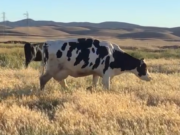
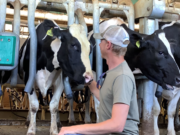
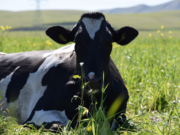
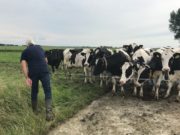



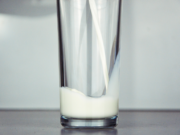

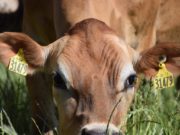

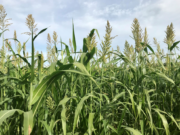
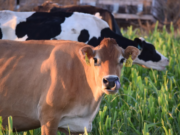
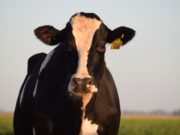
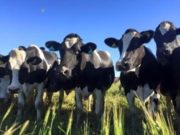

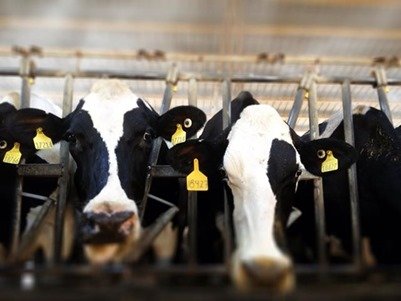

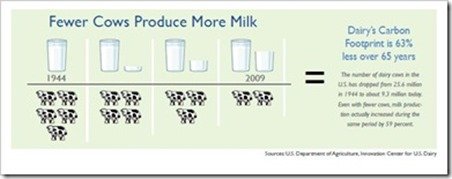
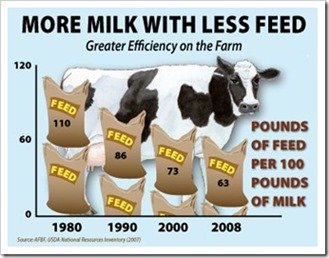

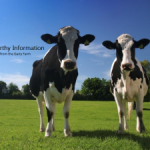
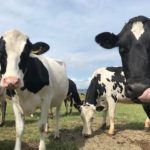
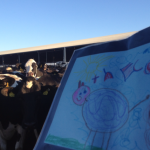
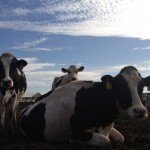
I am a raw milk drinker and have been since I was a little kid. I like to drink raw milk and know to milk production equipment. You shared very useful information about milk production that great info to all Thanks to share such nice information with us.
Is drinking milk really healthy for you? Raw cow milk is not good for human consumption. One of the dangers of drinking raw milk is getting infected with brucellosis.
The pasteurization process also kills all the good bacteria for digestion and reduces vitamin C and other mineral content. Vaccinations of the herds here in the US has almost eliminated the virus here. For me, I prefer the raw milk, and I think the benefits outweigh the risks..
I’m trying to find out what to feed a Jersey cow if there is not cow feed available. I have no grass and I feed hay year round. I have horses and feed high quality purina brand feed but I don’t know what to give my cow.
You can feed cows hay as hay is a kind of grass. You can also supplement some oat hay and grains also. If she doesn’t get the right amount of energy, her milk will dry up
After a cow give birth, how long should calf feed from moms milk?
Usually calves are fed milk for 2-3 months after they’re born, then their digestive system changes and they can start eating grass and other forages
a cow producing 20 liters of milk a day. its is in 1st calving stage and only in two months now, eventually it will give more milk. How to will I put it to dry cow after 10 months?
She will go down in production over time
Name the cow which gives 15 to 20 litres per day pls?
Why is the unit measured in pounds?
Milk here on farms in the U.S. is often measured in pounds
will a cow keep producing milk after having a calf, as long as she is milked, or does she have to have more calves to keep producing milk
A cow will go up in production after calving and peak at about 30-60 days. She will decline in production from that point and eventually dry up. Each cow is different in the amount of time they can keep milking. Some can milk 2-3 years after calving, and others only about a year. Cows not bred for milk production, like beef cows, may only produce milk for 2-3 months after calving.
How much milk is produced in life of a cow? How many calves born from same cow? Can sex of calf be controlled?
I answered these questions in some of my other posts
Hi,
I’m Alfred from Nigeria and I’m doing research on ranching. Was wondering if you would be kind enough to refer me to go other articles you spoke about in the answer above by pasting the links to the articles.
Thanks.
yrd
Great info for conversation at the dinner table with the children and adults. Fascinating stats. Thanks!
We go through a gallon or two a day (family of 5) and noticed that when we taper off on drinking milk, we tend to gain weight (wife and I at least). Something about milk seems to satisfy “the hungries” and we tend to eat less after a big glass of milk. We don’t have any weight problems in the family at all and suspect it has a lot to do with milk.
Aw so interesting that you mention that – you’re very perceptive. I’ve done some research and writing on milk fat and have found that the milk fat actually promotes a healthy metabolism. So you’re spot on!
Which cow is most sutable in humid climate, or less grass is required and give a good productivity?
Jerseys are more resilient to heat stress. Some say that they have a better feed conversion rate than some of the other breeds due to their small size
if i am having 10 litre yielding cow and i am selling all the milk how to manage milk production during dry days
You will need another cow so you can have some milk while the other one is dry. They need their vacation days
When you say a cow will keep growing until she is 3-4 years old, does it mean she can die any time from then or does it mean that she has reached optimum maturity age and she can’t mature any further?
Sorry if my question sounds kinda naive.
Basically that she won’t mature any further – Like people can keep growing until their mid-30s. That’s the growth peak
Oh okay I get it. Thanks for the clarification.
sir,thanks for your reply.i wanted to know a cow yielding 10 litres milk at calving what will be over all milk yield in lactation does it goes beyond 300 days & is it profitable to feed dry cow and buy another cow to manage milk production or replace the cow every year.
sir,all this points are applicable to buffalo also as i came to know that 10 litre yielding buffalo will increase after 3 weeks at 12 litres & after 1 month will come down to 10 & will maintain up to 6th month & then decline.is it compulsory to feed concentrate or only fodder & hay is sufficient.if i wan to do 50 litres business should i buy cows yielding more than 50 litres as some of will consumed by calf and will decline in future
Writing a research paper and need to know what a cow will produce with zero supplements or feed (strictly a grazing diet) vs. a modern day dairy cow with supplements… rough averages
It depends highly on the type of grass in your pasture. Most herds that relying only on pasture grazing produce about 40 lbs of milk per day. The reason being that there is often not enough energy or protein on a typical grass pasture. You have to supplement with additional nutrients from other sources (like alfalfa hay which is high protein) to get the additional production. typically 70-80 lbs of milk per day from cows with balanced diets
Sir I want to know which breed of cows are vest to open a dairy in up India. …and what are there cost
Aksh,
What state do you live in? Go ask the question to local farmer! Dairy Guy is likely not familiar with Indian breeds…..
Wasn’t quite sure where to post this, but it’s pretty revealing…
According to a Wall Street Journal report, US dairy farmers have dumped 43 million gallons of milk due to record milk production and falling consumption, that’s enough to fill 66 Olympic sized swimming pools! In fact fluid milk consumption has been falling for decades.
So what is the industry doing about it? Dairy Management Inc., a de facto marketing firm that is paid for by America’s 43,000 dairy farmers, has invested tens of millions of dollars in the past year to develop new milk-heavy menu items with McDonald’s Corp., Yum Brands Inc.’s Taco Bell, Domino’s Pizza Inc. and about 10 other companies it calls “dairy partners.”
Also, the USDA pledged to buy about $20 million of cheddar cheese to help struggling dairy farmers, the second time it has intervened in the market in less than three months.
Could we be witnessing the demise of the dairy industry as we know it and in particular ‘factory farms’? Let’s hope so as they are cruel to animals, bad for the environment and promote an unhealthy diet.
I would love to have posted a link to the article but apparently you’re not allowed to post links on this site which provide scientific or fact-based evidence against dairy farming or dairy consumption…
Lets put this into perspective – The problem with cows is that there is no off switch. They will keep producing milk even if there is too much milk. Farmers in the midwest grew milk production without growing processing capacity and causing this problem. 43 million while sounding like a lot is literally a drop in the bucket compared to the annual milk produced in the U.S. This story is dramatically over-sensualized because milk production amounts will always fluctuate. As a dairy farmer, we are all forced to pay part of our income to Dairy Marketing Inc but it is hardly a bad thing to promote your product. Dairy is one of the most nutrient-dense foods you can eat. I think it is great that we are helping to convince these food companies to use better quality ingredients. After all, them using substitute products like margarine is what led to trans fats and unhealthy foods. It is actually a win for consumers who eat at these places because they get better quality food. The government purchasing some cheese is hardly helping dairy farmers because it would have been sold eventually. The USDA’s budget is 139 billion and 75% goes to nutritional assistance programs. Much of the cheese they bought will go to food banks, a good and noble cause in my opinion. I don’t think you can say that is a bad thing. Dairies are not bad like you say, just read my blog. All this is just normal supply and demand dynamics
My wife and I have 9 acres and are wanting to start farming cows for milk, On average if we went heavier on feed what would be the ideal balance of dry feed per day per cow and how many would you suggest per acre given we want to expand in the future.
Logan, awesome you have a fun project! You generally need about 1-2 acres per cow, but it depends how much feed you can grow on those acres. If you’re going to pasture graze only, you may need more. You will want to supplement dry hay when the grass doesn’t grow and in winter
Just a quick question: How much of their body weight do cows produce in milk everyday?
Well a cow will weigh on average 1,500 lbs. and produce 70lbs of milk each day. So doing the math, that 70 lbs. would be 4.67% of her bodyweight
Is Powdered milk a by product of milk. Where is this process dealt with in the US. Spending time in the Caribbean (Trinidad Tobago) Working in the oil industry in the fifties and sixties. The only milk sold at these farmers markets type locations, was imported powdered milk. The locals were good at making the powdered product almost taste like real milk. Where in the US is most of the dehydrated powdered milk made? I was raised on a farm in Texas, drank lots of fresh whole (raw) milk. I remember the cream that was skimmed off the top for making butter. We milked for our own consumption, but did sale butter my grand mother made to local families and sometimes gave away. times have changed since then. A person would probably go to jail now if they did that. Just wondering which breed of cow has the higher cream content, or are do all the breeds, Jersey, Guernsey, and Holstein produce the same per pound of milk.
Thanks for your time and info. E-mail me with response.
This was very helpful when I had to do a project on Dairy cattle and knew nothing about them Thank you to whom every made this page.
Thanks- I’m glad you found it helpful
Comment:thanks a lot if I visset the place I am very happy because its my interseted
hello sir,where can we get the super cows? if you know please send the details
How much($) do the milk company or creamery pays to the milk producer on a liter or gallon in the US and CAN?
Milk is sold in 100 lbs- The price has been averaging around $12-14/100lbs, so the farmer gets only about $1-1.20/gallon of milk here in the us
Very informative thanks….We are starting a milk production venture with 3000 cows was looking for this (Y).
500 bales of hay at 55 lbs each, how much milk would this produce from a Holstein and at today’s market value what would be the monetary value of the milk?
When the milk truck comes do they weight the water and milk together or do you have to divied to get the milk fat if so can you break it down for me to see how much money you make on 100lbs . Have tryed and can’t get it
The milk tank usually has a measuring tube where you can measure the amount of milk in the tank. The tanks have calibrated tank charts to show how many gallons at a certain leve. Milk truck drivers are licenced here in the US to make these measurements. Fat and Protein are measured at the creamery, but milk is typically payed per 100 lbs. (called CWTs) so say you have to convert to lbs and there is 8.6lbs in a gallon. So–> 1000 gal= 1000×8.6 =8600 lbs = 8600/100 = 86cwts. The milk price is around $15/cwt = $1290. you can see the farmer doesn’t get much of the price you pay in the store at about $1.20/gallon
Is it possible for a cow to produce 100 litres of milk in a day?Is there a breed that produces 100 litres of Milk a day?
Thank you for the greater share. This blog is really interesting, that clearly outlines the capacity of cows for milking, among various kinds of cow. Significant blog !!
You talk about proteins & energy for milk cows. I know the Hay supplies the proteins but what do you feed for energy. My Milk Cow is not producing as much anymore. Can you email me
Cindy- extra energy would be a grain like flaked corn. You can add some to the alfalfa to see if it will boost her milk production. But if it’s been awhile since she had a calf, she will also give less and less milk
Is it true that a cow produces more milk than is necessary for her calf? Also, for what period of time will a cow produce milk after giving birth? Thank you.
Yes- a cow produces much more milk than a calf needs. A calf will need about 1-2 gallons per day, but most cows will produce about 8-10+gallons per day. The calf will only need milk their first 3 months of life, then their digestive system changes so they can eat grass. Cows will produce milk for 1-2yrs after calving
Do farmers use female hormones to increase milk production ?
No- the only hormone that increases milk production is rBST. Most of the milk today is rBST-free. Almost no farms use it anymore and most dairy products are labeled rBST-free so you can check the label
Rethink your math
Very informative material. Thank you for your time. I’m in the process of getting into dairy farming the information is very helpful.